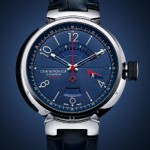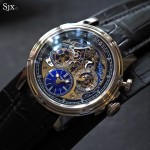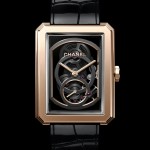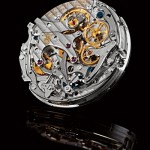Louis Moinet Debuts New Chronograph Movement in the 1816
A tribute to the first-ever stopwatch.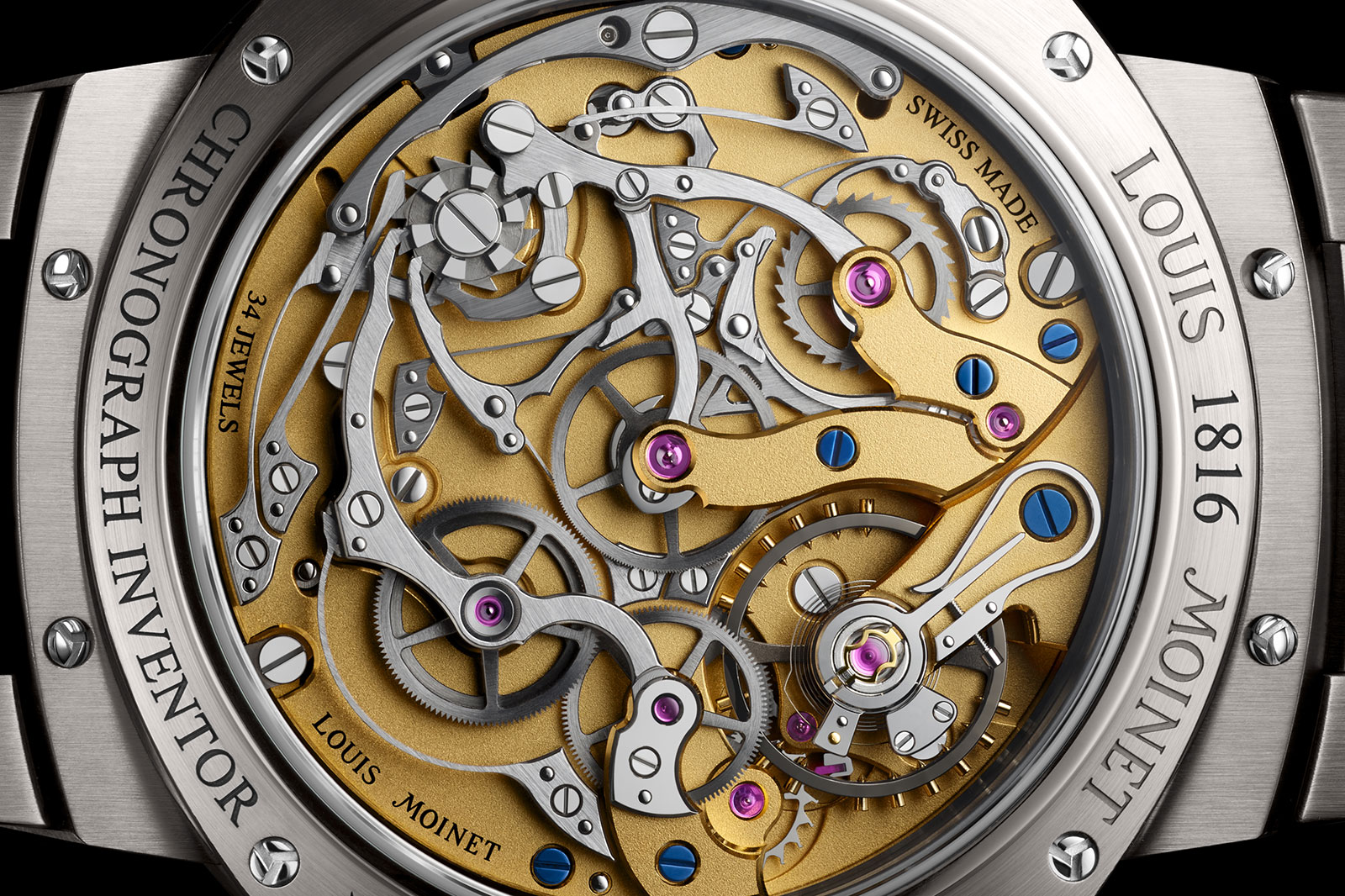
A tribute to the first chronograph pocket watch, the Louis Moinet 1816 combines contemporary case design with an all-new, classically constructed chronograph movement featuring a column wheel, horizontal clutch, and swan’s neck regulator. With the 1816, Louis Moinet has concocted an unusual but appealing proposition that blends the new with the old.
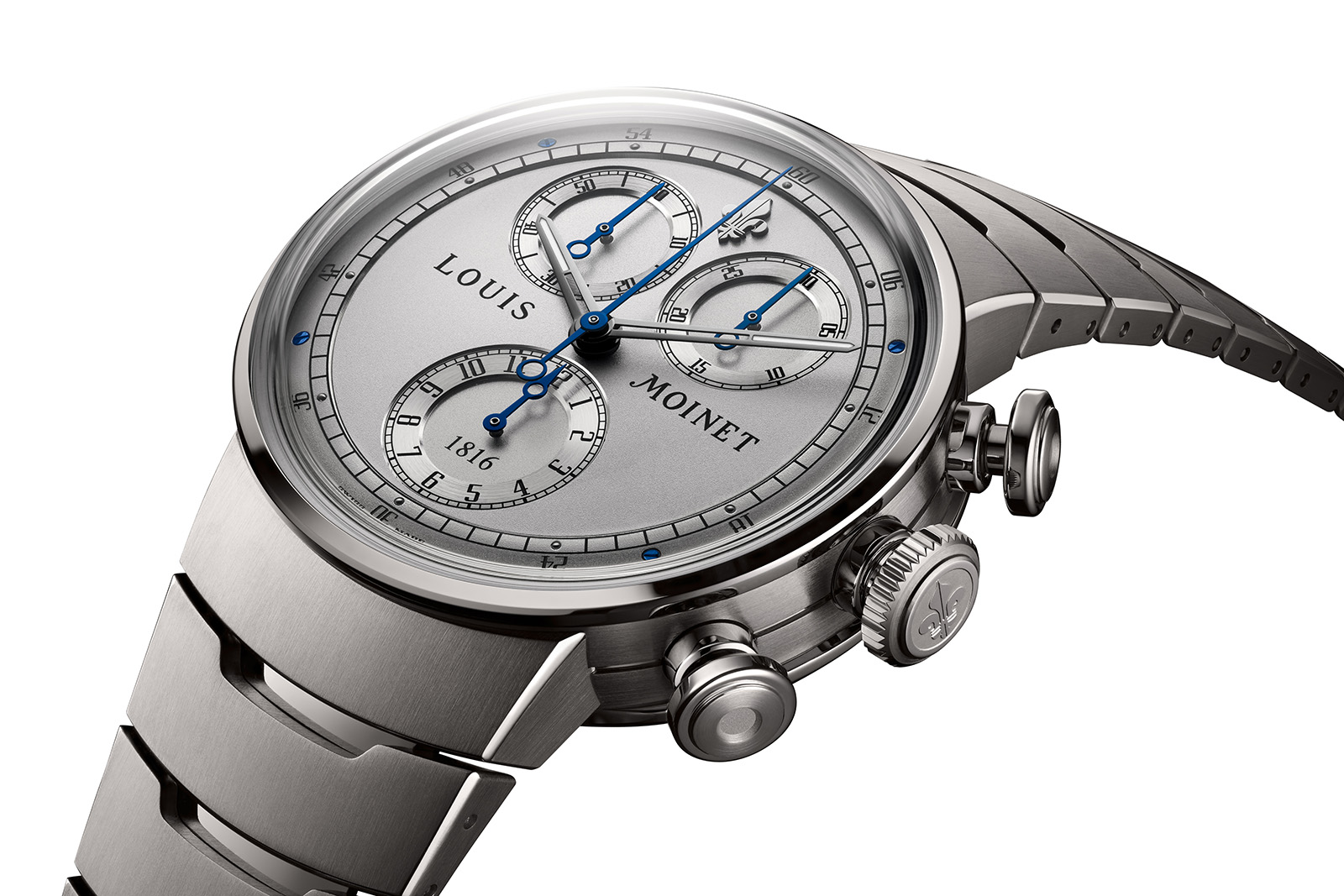
Initial thoughts
Louis Moinet is regarded as the inventor of the chronograph thanks to the compteur de tierce (which translates as “thirds counter”) that he revealed in 1816. His creation was considered more of a scientific instrument than a chronograph as we know it today. It was Nicolas Rieussiec who actually coined the term “chronograph” a few years later in 1821.
Now the revived brand bearing Moinet’s name has taken inspiration from his 1816 invention to create a reinterpretation of the compteur de tierce.

The original “thirds counter”. Image – Louis Moinet
With a monochromatic, all-titanium construction and integrated bracelet, the 1816 looks to be a sports watch, yet it only has a 30 m water resistance. The traditionally styled movement stands in contrast with the contemporary and somewhat trendy exterior.
Such a tribute to a historic piece would arguably have worked better with appropriately classical design. As it is, the 1816 is neither a dress nor a sports watch. The design feels confused, but the appeal of the movement alone is clear since it ticks most of the boxes that collectors appreciate in an old-school chronograph.
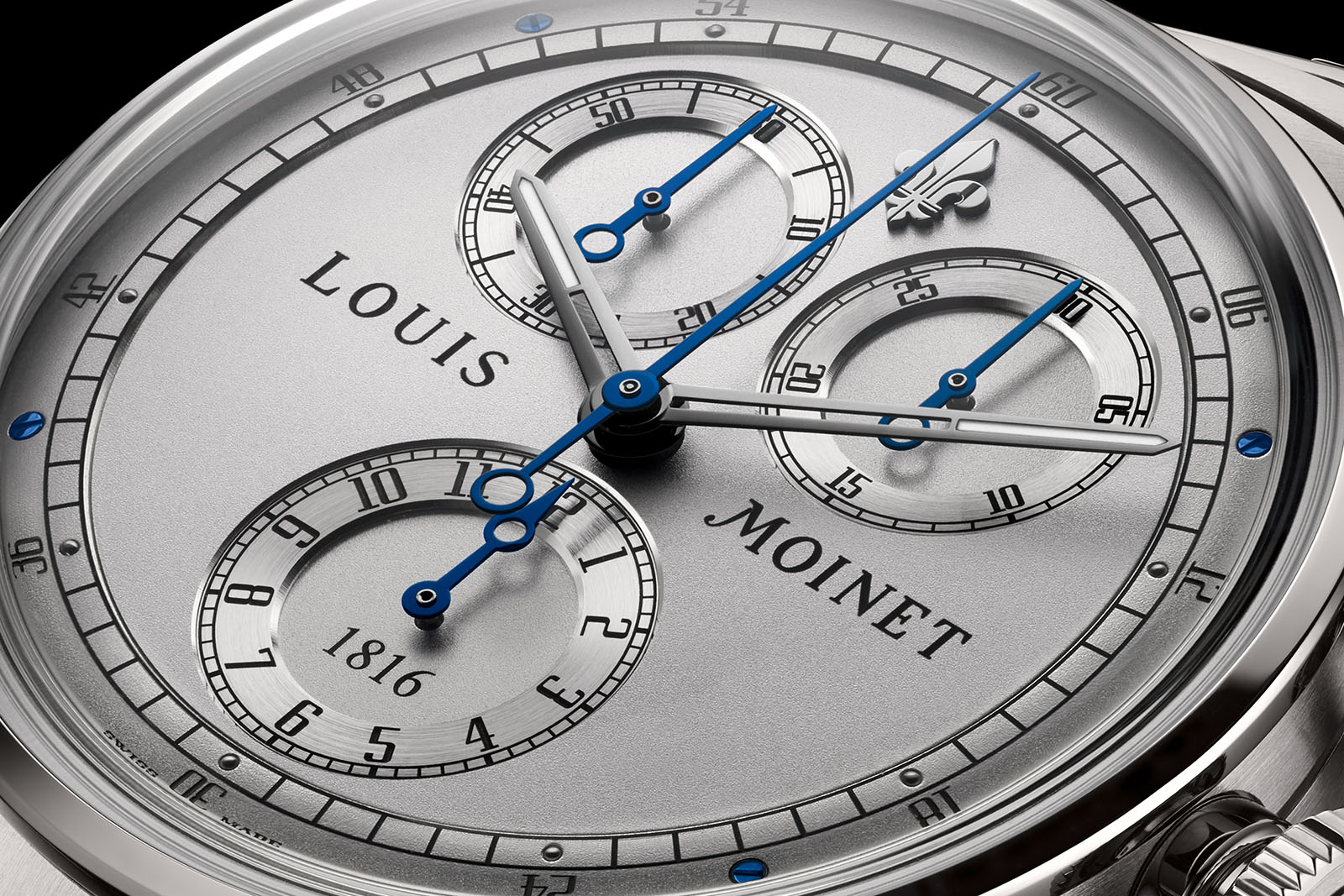
A pleasing dial
The 1816 measures a moderate 40.6 mm in diameter, but is 14.7 mm tall, which is thick. The watch probably wears larger than it measures, since the elongated lugs don’t allow the integrated bracelet to “hug” smaller wrists. Both the case and bracelet are in grade 5 titanium, with both polished and satin-brushed surfaces.
While the case and integrated bracelet fall a little short in terms of aesthetics, the dial is one of the 1816’s best traits, movement aside. The layout is faithful to Moinet’s thirds counter, with the running seconds and instant minute counter above the central hands.
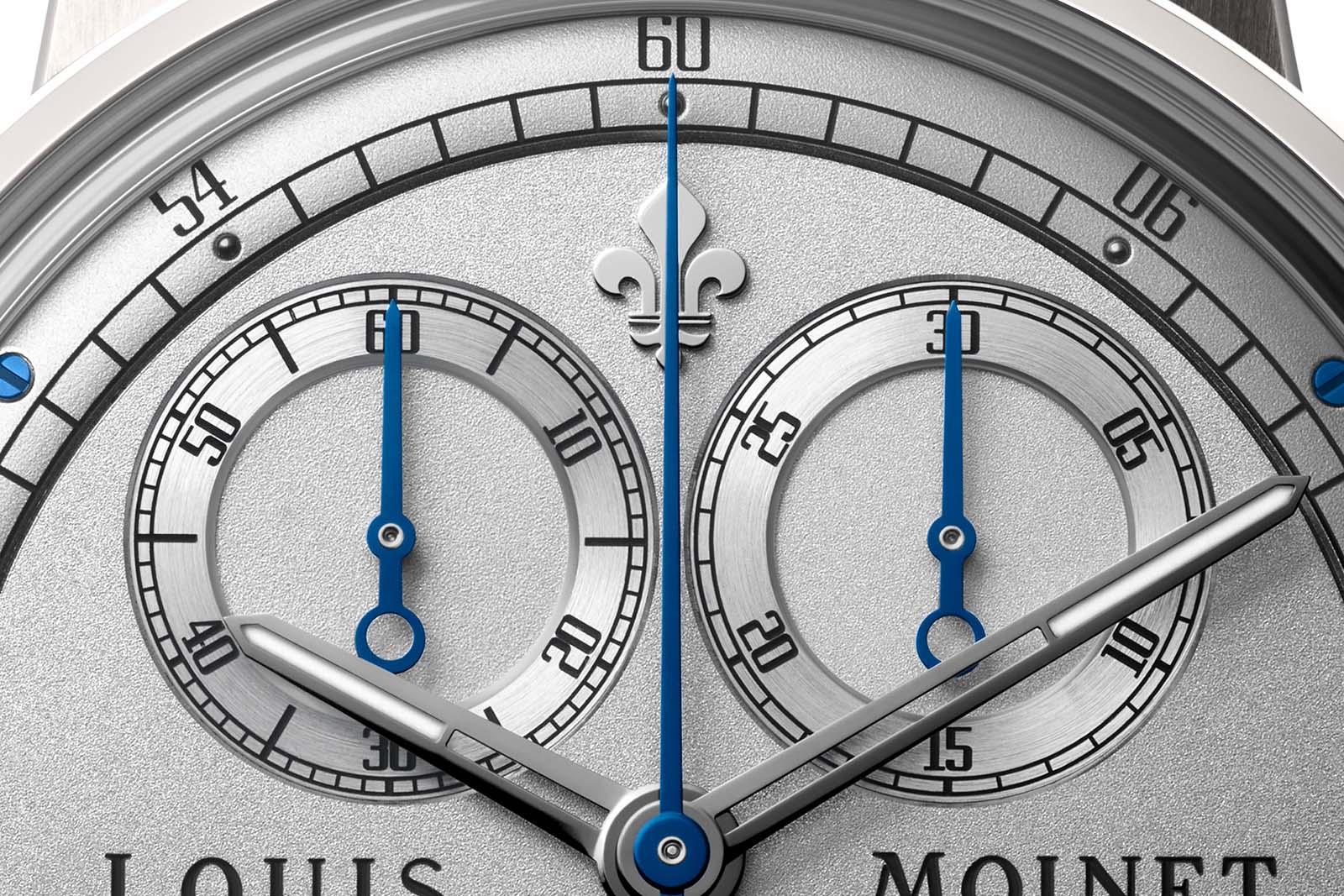
The dial also includes two pairs of blued screws that secure it to the base plate, replicating a detail from 1816 counter. The squared typography, circular brushing of the chapter rings on the registers, and frosted texture make for an appealing face. Although clearly modern, it resembles pocket watch dials crafted in the 19th century.
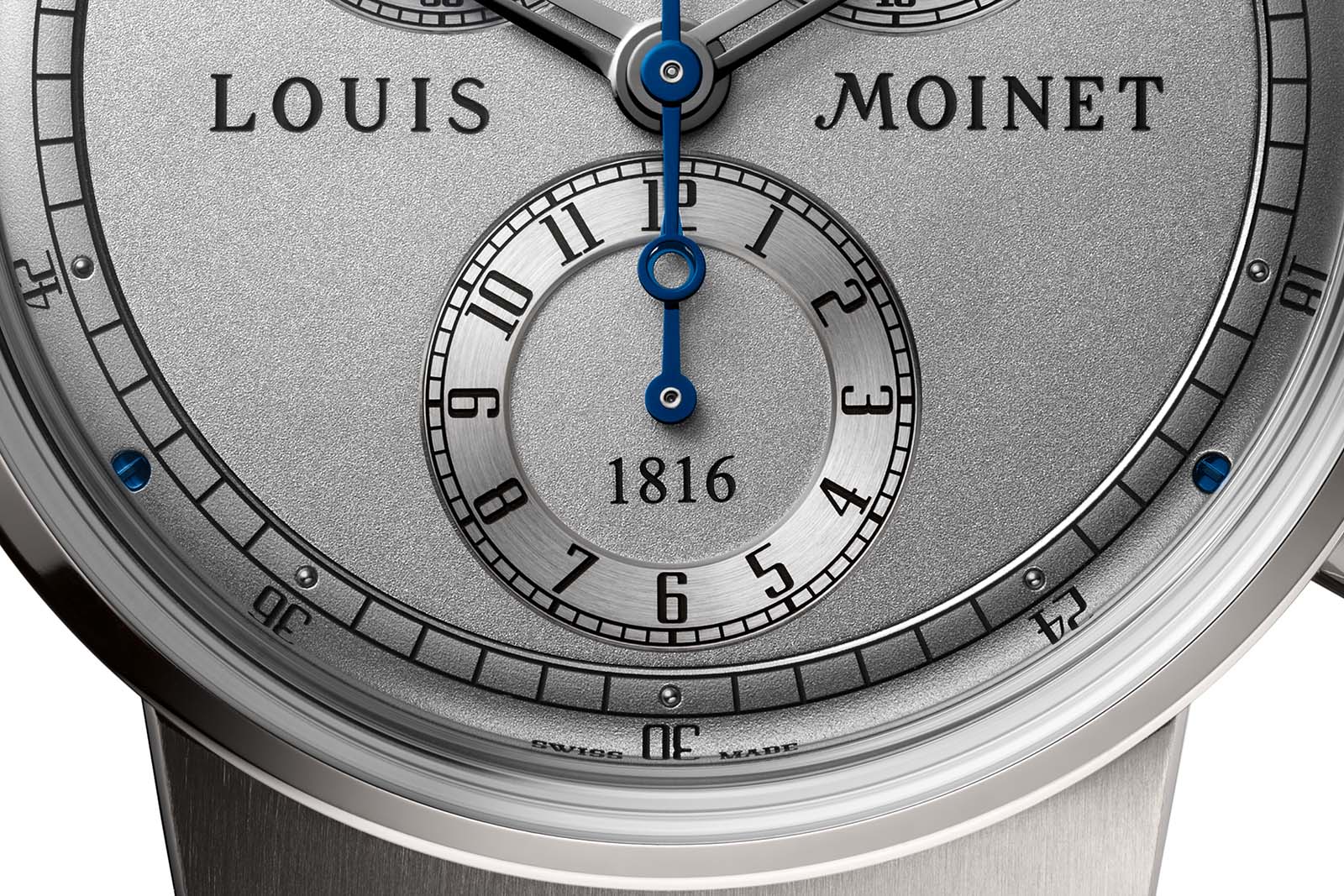
An “in-house” movement
Experienced watchmakers and constructors tend to agree that developing a chronograph movement is among the more difficult endeavours. In-house chronograph movements are a mark of quality, but also require effort and investment. Louis Moinet turned to its longtime supplier Concepto, a movement specialist, for the LM1816 calibre.
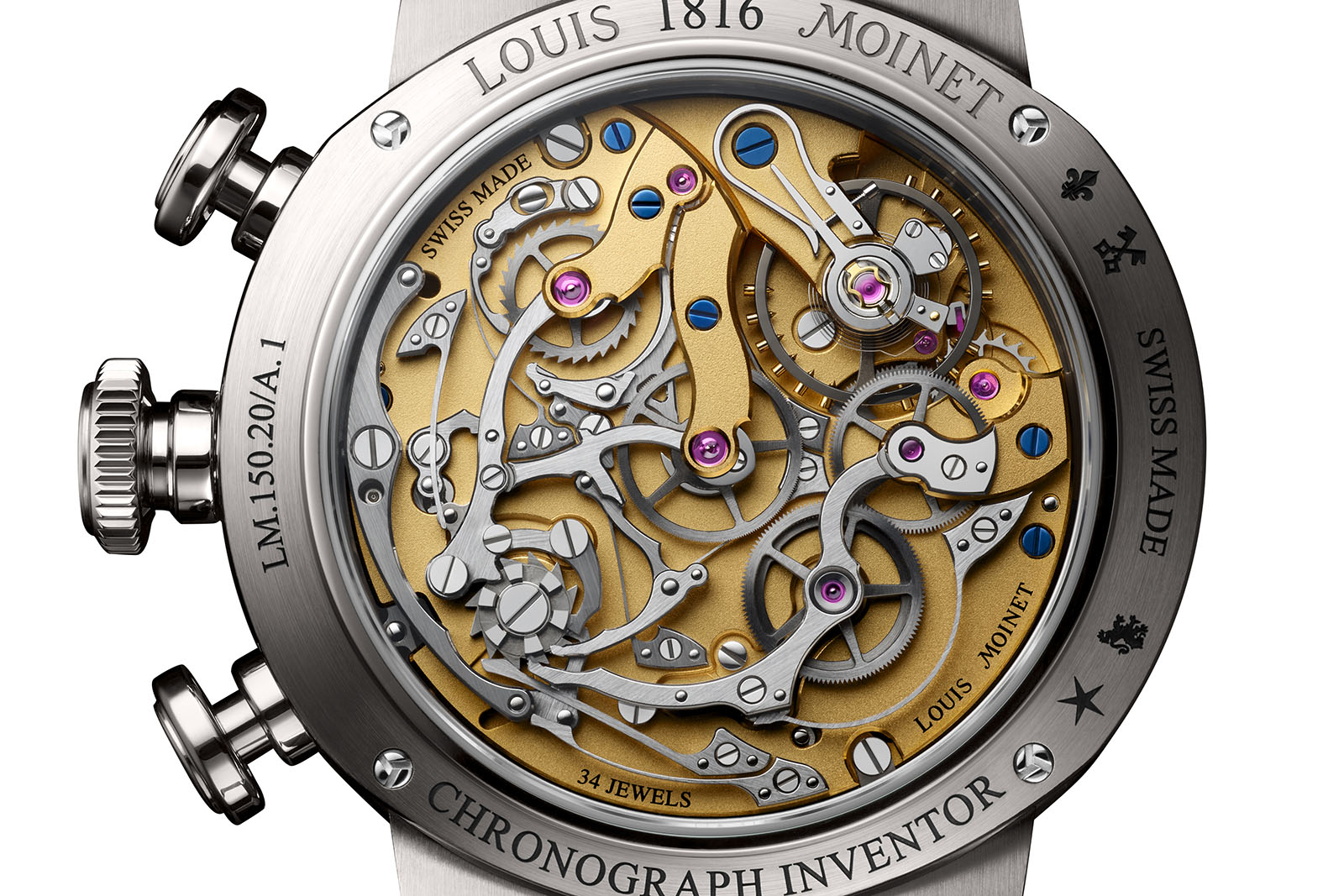
The LM1816 movement is a manual wind calibre with lateral clutch, and column wheel, running at 4 Hz for about 48 hours on a full wind. While clearly modern, the movement draws inspiration from vintage calibres, even appearing to borrow from some in terms of architecture. This is not surprising as Concepto has historically worked with existing chronograph constructions to create a variety of new movements.
The LM1816 includes an uncommon feature in the form of a jumping elapsed minute counter, driven by a snail cam and jumper mechanism. This is a feature usually found in high-end chronographs, like the Lange Datograph L951 or Patek Philippe 29-535 PS. An interesting detail is the adjustable jumping finger, which allows the watchmaker to tweak the tension that’s exerted on the minutes wheel to perfect the motion of the jumping minute hand.
Interestingly, due to the dial layout, the running seconds indication has to be relayed underneath the escapement and balance assembly in order to be displayed in the counter at ten o’clock.
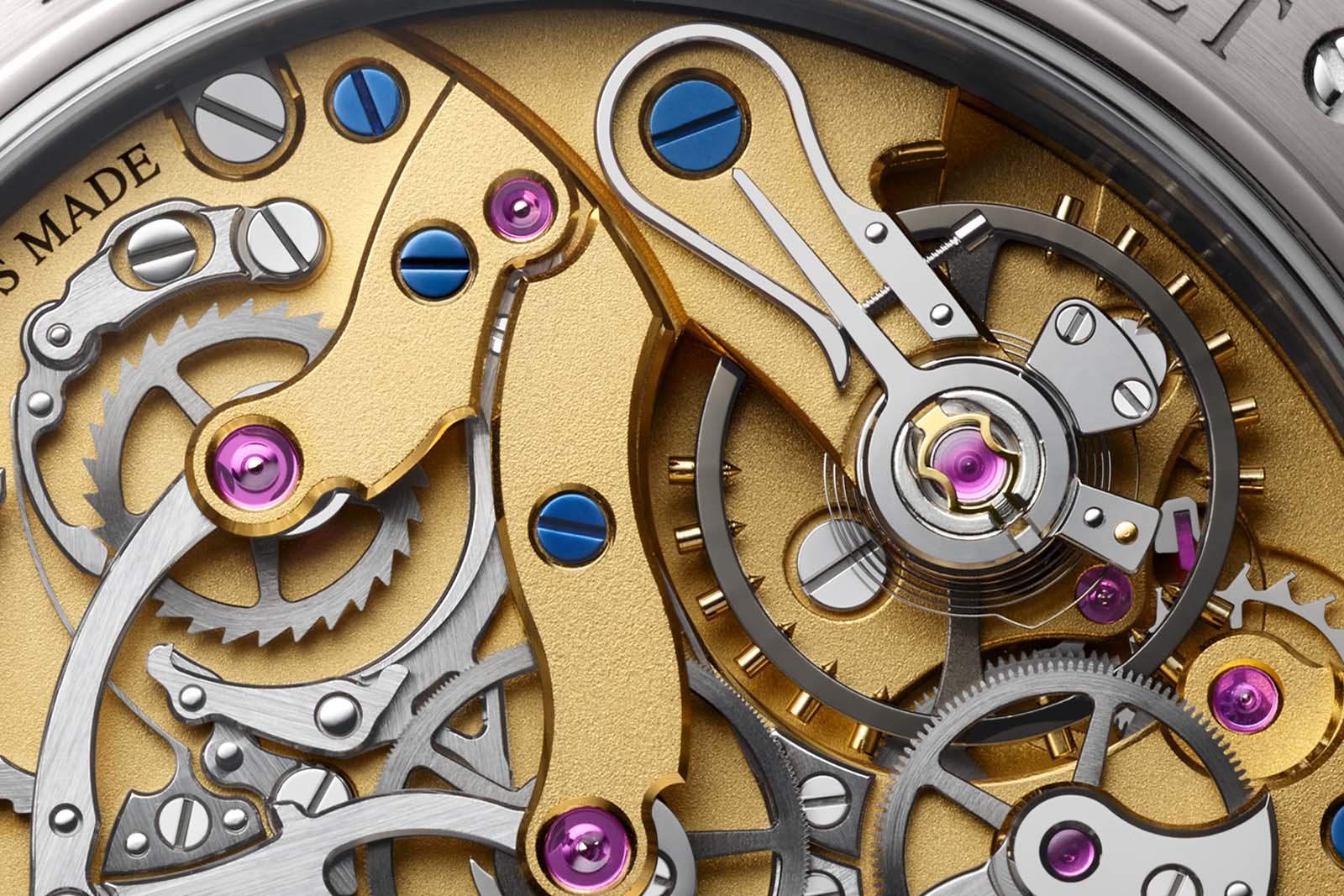
While the screwed balance is not free-sprung, it employs a swan’s neck regulator for securing the raquette
The movement’s decoration is simple. The bridges are in a finely-grained gilt frosting that brings to mind old French and English pocket watch movements, while the edges are bevelled (by CNC milling it seems). The many steel levers are brushed and most of the screws are polished, while some are blued.
All in all, the LM1816 is one of the more interesting chronograph movements on the market lately.
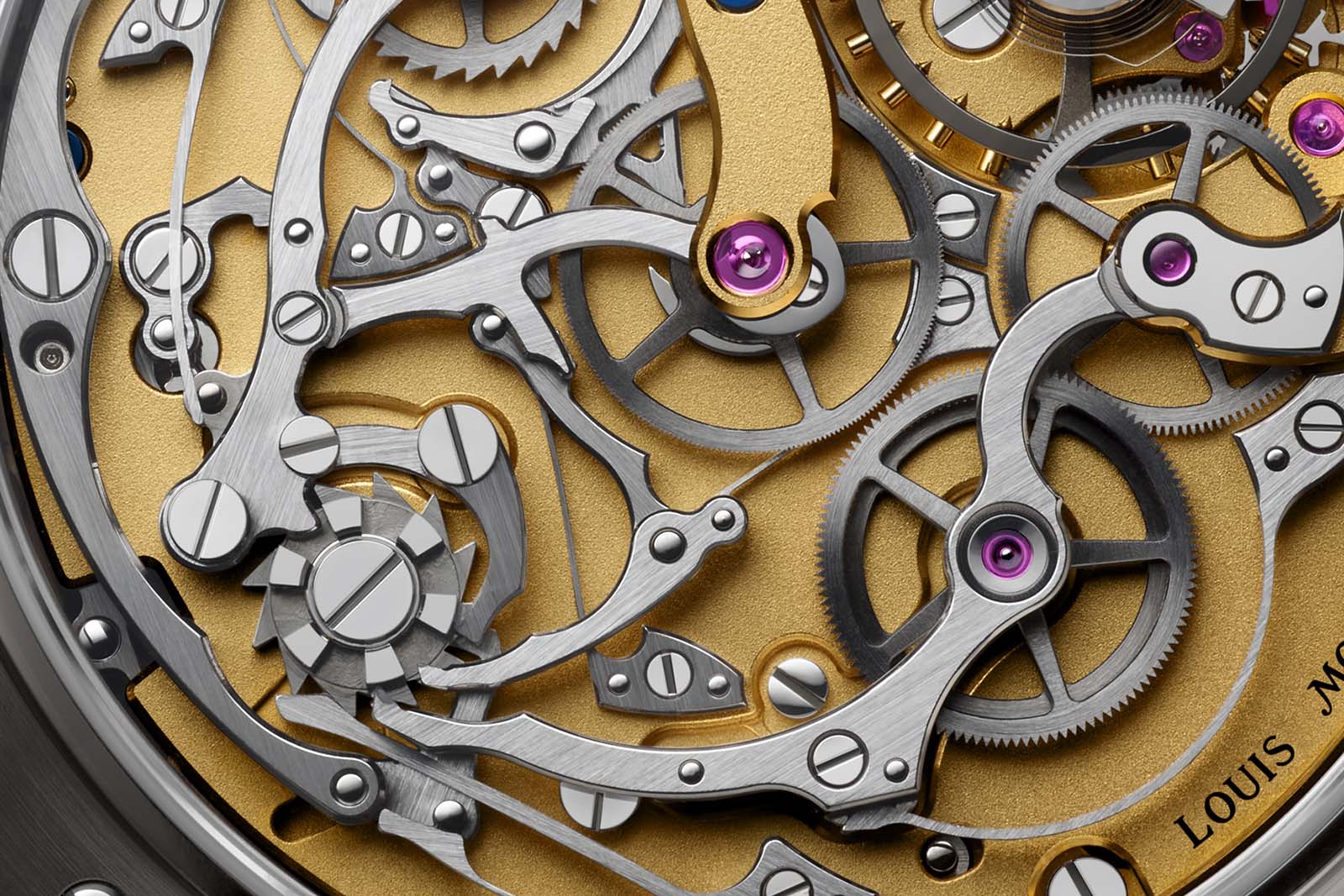
Key Facts and Price
Louis Moinet 1816
Ref. LM-150.20.60
Diameter: 40.6 mm
Height: 14.7 mm
Material: Grade 5 titanium
Crystal: Sapphire
Water resistance: 30 m
Movement: LM1816
Functions: Hours, minutes, small seconds and chronograph
Winding: Hand-wind
Frequency: 28,800 beats per hour (4 Hz)
Power reserve: 48 hours
Strap: Integrated grade 5 titanium bracelet
Limited edition: No
Availability: At Louis Moinet retailers
Price: Approximately US$35,000
For more, visit louismoinet.com
Back to top.

